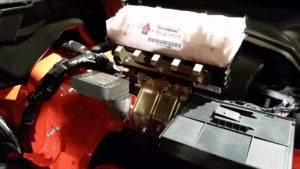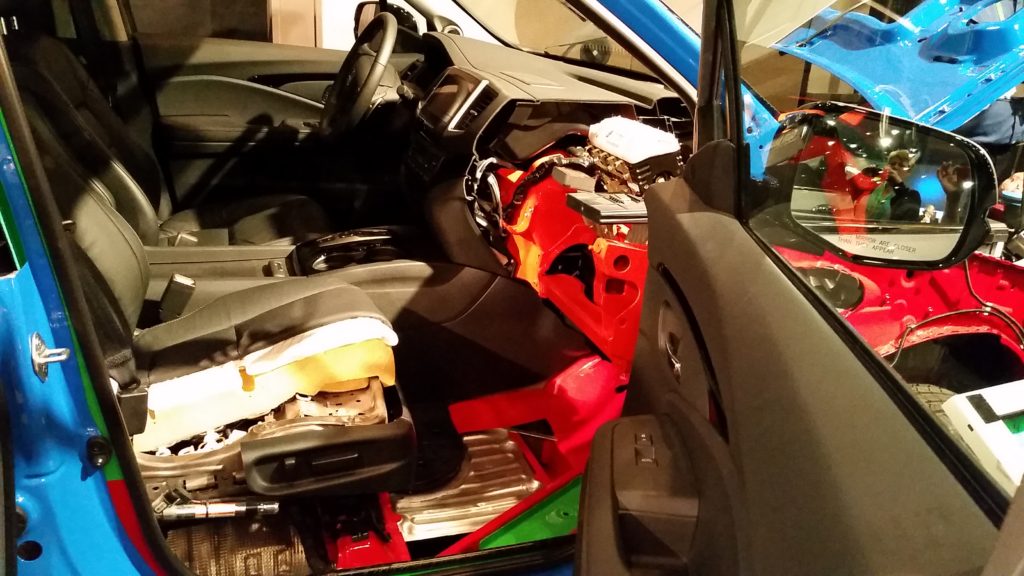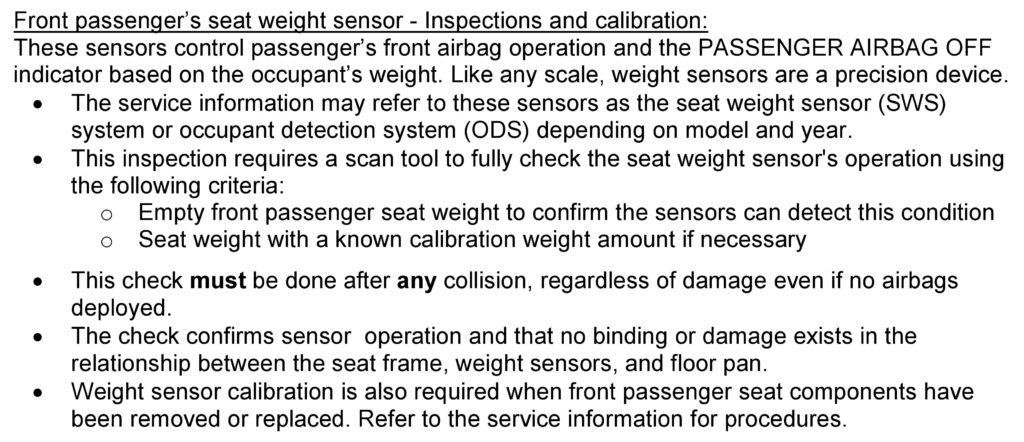
Honda: All collisions demand passenger seat sensor scan; seat removal requires calibration
By onAnnouncements | Market Trends | Repair Operations | Technology
Like rival Toyota, Honda has stressed that the passenger seat weight/airbag sensor must be scanned after every collision, even minor ones or instances where the airbags didn’t blow.
“These sensors control passenger’s front airbag operation and the PASSENGER AIRBAG OFF indicator based on the occupant’s weight,” Honda wrote in a position statement released Friday. “Like any scale, weight sensors are a precision device.”
A technician must scan, and if necessary, calibrate the passenger sensor.
“This check must be done after any collision, regardless of damage even if no airbags deployed,” Honda wrote. (Emphasis Honda’s.)
Otherwise, there’s no way to tell if the sensor works or if “binding or damage exists in the relationship between the seat frame, weight sensors, and floor pan.”
Calibration is always mandatory if you’ve removed anything on the passenger seat, according to Honda.
“Weight sensor calibration is also required when front passenger seat components have been removed or replaced,” Honda wrote. “Refer to the service information for procedures.”
For more on scanning, see our earlier coverage of Honda’s position statement.
More information:
Honda position statement on scans, calibration for Hondas and Acuras
Honda, July 15, 2016
Images:
The passenger-side airbag in the 2016 Honda Pilot is seen in this Honda cutaway at the 2016 Great Designs in Steel. The orange instrument panel is actually magnesium. (John Huetter/Repairer Driven News)
Honda has stressed in a new position statement that the passenger seat weight/airbag sensor must be scanned after every collision, even minor ones or instances where the airbags didn’t blow. (Provided by Honda)


